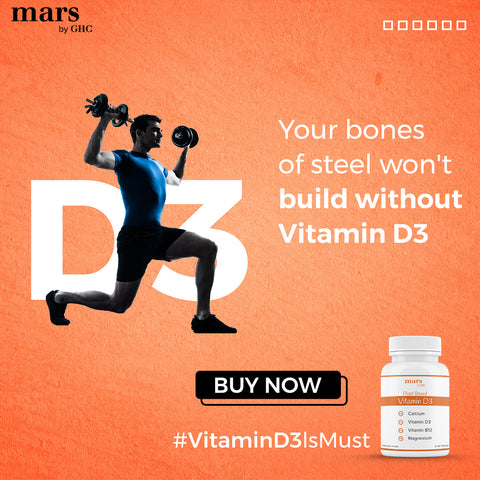Everything You Need To Know About Glutes And Workouts

Glute Muscles: Strengthen, Stretch, and Activate
-
Workout Steps for Stronger Glutes, Quads, and Hamstrings
-
Take Away
-
Frequently Asked Questions
-
References
Sure, powerful leg muscles help you seem toned, but they're also crucial for general functioning. Leg strength is required to move about efficiently and maintain excellent posture when standing. Consider the quadriceps muscle. According to the research, these muscles, which are the most numerous in the body, assist you in performing ordinary everyday activities such as mounting the stairs, rising from a chair, and extending your knee.
The primary leg muscles are the hamstrings, quadriceps, adductors, and calves, however, the glutes may also be included.
Glutes meaning - The glutes are technically part of the buttock muscles, however, they are engaged in almost all lower-extremity motions and are used in almost all leg workouts.
The glute is made up of three separate muscles that help with hip abduction and medial rotation, as well as pelvic stability. You are exercising your glutes when you perform squats, deadlifts, or lunges. Strong leg and glute muscles will also aid in injury prevention. Strong legs offer a protective impact, making you tougher and protecting you from injuries, especially for athletes who do dynamic manoeuvres like leaping and cutting.
Strong legs provide you with greater control over your body and allow you to recover more quickly if you lose your balance or fall awkwardly.
Being weak in your lower extremities puts you at risk for a variety of injuries and illnesses.
Furthermore, your leg muscles are a vital source of power for your body. A stronger lower body may also help with sports performance. Strength is the cornerstone of athletic movement for athletes when speed and power are involved. Having a strong foundation can help you become a better athlete. Finally, experts have discovered a correlation between leg strength and good ageing. According to one research, enhanced leg power (and total muscle fitness) is related to better cognitive ageing in study participants.
Workout Steps for Stronger Glutes, Quads, and Hamstrings
Begin with a solid warm-up to get the blood flowing, such as three to five minutes of treadmill or elliptical walking or jogging in place. Before beginning the exercise, do a few dynamic stretches such as walking lunges, runner lunges, monster walks, or jumping jacks.
Perform the motions shown below with minimal rest in between. Repeat for a total of two to three rounds, resting for one to two minutes between each round.
This exercise may be done two to three times per week and can be added to your existing fitness programme. Workouts are intended for persons who are in good condition and have no known ailments or health issues. If that is not the case, it is important to seek the advice of a personal trainer or physical therapist to assist you in developing a personalised regimen.
To have joint flexibility and muscle for doing squats, one can use a joint support supplement by Mars By GHC.
Squats using Bodyweight
- Place your feet shoulder-width apart.
- Lower your hips and buttocks into a squat posture by hinging from your hips and bending your knees.
- Throughout the exercise, keep your weight moving back into your heels (you should experience the feeling of sitting back in that imagined chair to work the glute muscles as well) and your chest pulled up (as if you were sitting up straight).
- To stand, pause at the bottom and then push up through the heels.
- Throughout the exercise, keep the quadriceps and glutes engaged. Perform 15 repetitions.
Deadlift using Dumbbells
- Begin by standing shoulder-width apart and holding 10- to 35-pound dumbbells in front of your thighs, palms facing your body.
- Hinge forward at the hips to drop your hands down the front of your thighs, maintaining the weights close to your body and leaning forward with your back and upper body.
- Maintain a small bend in your knees and a flat back.
- As you rise into an upright posture, squeeze the backs of your legs and glutes, forcing your hips forward as you return to standing (your hamstrings and glutes should be doing the work, not your back).
- Perform 15 repetitions, or 12 reps on each side if completing a single-leg deadlift.
Lunges Alternating Lateral
- Begin by standing with your feet together.
- Step your right leg out to the right side (controllably), bending the right knee as your foot reaches the ground and sitting back with your hips hinged (your weight should be over your right foot).
- Maintain a straight left leg and keep your chest and gaze ahead.
- Push off with your right foot and return to standing by squeezing your inner thighs together. Repeat on the other side. That is one repetition. Rep 12 times more.
- Hold dumbbells in each hand for greater difficulty.
Calf Raising
- Stand shoulder-width apart with your feet shoulder-width apart and your toes pointed straight forward.
- Lift your heels off the floor using your calf muscles.
- Pause at the peak before lowering to the earth.
- Perform 15 repetitions carefully to maintain the calf muscle fully engaged.
Sumo Squats
- Begin by standing with your feet wider than hip-width apart and your toes pointing out at a 45-degree angle.
- As with the bodyweight squat, bend your knees and descend your hips into a broad squat until your thighs are parallel to the ground, keeping your chest elevated.
- Return to standing by pausing at the bottom and pushing through your heels. Perform 15 repetitions.
Take Away
Exercises that may strengthen the muscles include single-leg squats, normal squats, deadlifts, monster walks, side-lying leg lifts, step-ups, and reverse planks. For further toning, consider a hard lunge circuit, split squats, and deadlifts.
Frequently Asked Questions:
1. What happens when the glutes are weak?
Piriformis syndrome may be caused by weak or tight glutes. The muscle behind the gluteus maximus is called the piriformis. If symptoms appear, you may need to avoid exercise or ice your glutes.
2. How do you know if you have strong glutes?
You may experience less pain and discomfort walking up and down the stairs if your glutes are stronger.
3. What happens if I train my glutes every day?
Overtraining glutes without stretching or rolling them out may result in very tight muscles, which may impinge on the sciatic nerve, causing considerable discomfort.
References:
- Bruno Bordoni; Matthew Varacallo, May 22, Anatomy, Bony Pelvis and Lower Limb, Thigh Quadriceps Muscle
- Claire J. Steves, a,b,* Mitul M. Mehta,c Stephen H.D. Jackson,b and Tim D. Spector, Feb 2016, Kicking Back Cognitive Ageing: Leg Power Predicts Cognitive Ageing after Ten Years in Older Female Twins






